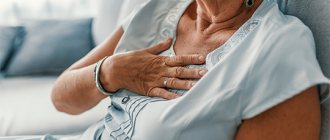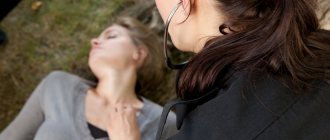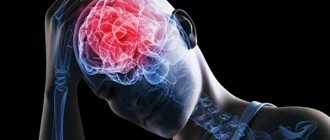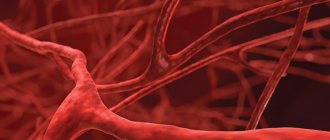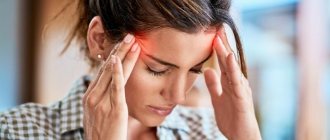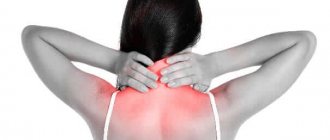General rules of care
The recovery period after a stroke is divided into early (up to 6 months), late (6-12 months) and residual effects (after 1 year). Ideally, in the early recovery period, the patient is recommended to be treated in palliative hospitals, sanatoriums, in the late recovery period and during the period of residual effects - in a day hospital, rehabilitation department, or by a visiting team at home. In reality, most often patients are at home after an acute period of stroke, and the main question that arises among their loved ones is where to begin rehabilitation. One of the main tasks of the rehabilitation process is to create comfortable conditions that promote relief and speedy recovery.
Preparing the premises
To exclude the impact of external traumatic factors (light, sound, temperature stimuli) on the patient’s psyche, he should be placed in a bright, well-ventilated room, where no extraneous noise can be heard from the street. The room should maintain a comfortable temperature within +18-22 °C.
The room should not be cluttered with furniture or objects that are easily moved out of place. A good alternative to a regular bed would be a functional one - with adjustable height and backrest position, side rails, and lockable wheels. Near the bed you need to place a bedside table with hygiene items, a blood pressure monitor, other necessary things, a wheelchair or other mobility aids (walkers, canes), a portable toilet or a bedpan.
If the person caring for the patient is not always with him, you can equip the room with a call button that the patient can easily reach, or replace it with a regular bell. Patients who can move independently or are beginning to train the skill of walking will find handrails along the walls very useful, and anti-slip mats in the bathroom will prevent injuries.
Body hygiene and bedsore prevention
Adequate prevention of bedsores can prevent their occurrence in 80% of cases.
Preventive measures:
- a special anti-bedsore or foam mattress with a thickness of at least 10 cm;
- soft bed linen without wrinkles;
- special cushions or pads made of foam rubber for vulnerable parts of the body (back of the head, shoulder blades, elbows, sacrum, heels, ankles);
- changing body position every 2-3 hours;
- comfortable underwear;
- prevention of skin trauma - carefully moving or turning over the patient.
It is important to carry out proper hygiene measures and skin care. At least once a day, during hygienic procedures, you should examine the entire surface of the patient’s body, vulnerable areas - every time you turn over. You should use waterproof diapers and diapers and change them as needed. It is necessary to wash the patient with warm water without soap after each bowel movement, washing with soap - no more than once a day, it is better to use liquid soap. After washing, the skin is thoroughly dried with a soft towel. For dry skin, moisturizing and nourishing creams are used; for diaper rash, powders without talc are used.
Nutrition
Food should be comfortable to swallow and easily digestible. The patient needs a sufficient amount of fluid - at least 1.5 liters. in the absence of restrictions. Drinking should not be limited even with urinary incontinence, since with a lack of fluid, urine becomes concentrated and irritates the skin.
The patient's diet should contain a sufficient amount of protein. It can be a soufflé, minced chicken, beef, rabbit, or fish. Patients who have difficulty chewing or swallowing semi-solid foods may be given meat or fish broth.
The menu should include dishes rich in vitamin C, iron, zinc, fermented milk products, fruits and vegetables.
Food is prepared boiled or baked and must be freshly prepared. You should not eat fried foods, pickles, smoked foods, spicy foods, canned food, fast food, carbonated and sweet drinks. You need to eat 4-5 times a day, in small portions.
Where to go for help?
It is impossible to provide complete rehabilitation after a stroke in the home environment. Therefore, the most reasonable option for the family of an elderly person who has suffered an attack would be to enter into an agreement with a specialized institution, where he can receive help from highly qualified specialists and undergo a comprehensive rehabilitation program developed taking into account his diagnosis and characteristics of the body.
The Trust boarding house network has been providing care and rehabilitation to stroke victims for the past 5 years. The staff consists of highly qualified doctors and nurses with medical education. The boarding houses have all the conditions for a comfortable stay and full recovery after a stroke:
- Individual rehabilitation programs aimed at adaptation after a stroke and prevention of a recurrent attack.
- Regular medical examination of the patient.
- A full range of rehabilitation procedures: exercise therapy classes, exercises for the rehabilitation of speech and cognitive functions.
- Drug therapy.
- Social and psychological assistance, warm and attentive attitude towards each ward.
- Cozy rooms equipped with functional beds, wheelchairs, orthopedic mattresses.
- Prevention of bedsores and daily hygiene.
- Specialized 6 meals a day, rich in vitamins and microelements.
- Organization of leisure and communication.
By entrusting us with the care of your loved ones, you create decent conditions for life and restoration of their health, thereby reducing the recovery time after a stroke. To find out more details about our programs, leave a request on the website, and we will call you back at a time convenient for you.
Motor rehabilitation
The return of motor skills should begin as early as possible. Various exercises are used for rehabilitation after a stroke at home. Some of them can be done while the patient is in a supine position. These include:
- raising and lowering, bending and straightening the joints of the legs and arms;
- rotation of the arms at the wrist and elbow joints;
- clenching and unclenching fists;
- foot movements.
If the patient cannot yet sit or roll over independently, it is necessary to periodically change the position of his body.
An assistant helps the patient turn over by approaching him from the affected side and holding him by the healthy shoulder, knee or hip. When the patient begins to sit down, a special device on the functional bed will help him with this, by which he will pull himself up. You can do the following exercises while sitting:
- throwing the head back, tilting the head, rotating;
- stretching and bending the body forward;
- arching in the back, retraction of the shoulder blades;
- rotation of the arms in the shoulder joints;
- alternate leg lifts.
If a person can stand, the list of recommended exercises expands - the patient can additionally perform rotations and arm swings, bending, arm extensions with an expander, and walking in place.
Sitting down, changing positions in bed, getting up and walking if the patient was initially in a supine position is possible only after the doctor’s permission.
To improve coordination of movements, you should move your eyes in different directions, throw small objects at the target, gradually increasing their volume and mass and moving the target away. As the patient's condition improves, swinging movements in large joints, turns and tilts of the body are added.
Puzzles, construction sets, modeling from plasticine, origami, making appliques or regular copybooks are perfect for training fine motor skills.
Restoring speech after a stroke: sessions with a speech therapist
In the first time after a stroke, the main attention is focused on leveling organic damage and preserving vital functions. Speech rehabilitation usually begins a week after the incident, i.e., after speech has been lost, provided that the patient’s condition allows, i.e., is sufficiently stabilized. If this is not possible, then speech restoration classes should begin no later than two months after the incident. After this period, the nervous system will recover much worse.
An individual training program is drawn up by a speech therapist, and at first he supervises the implementation of the exercises. In the early stages, it is worth calling a speech therapist to your home - here the most favorable atmosphere is created for the patient. With further success in speech restoration, speech therapy exercises can be transferred to the doctor’s office. Patients who are making progress are recommended to exercise in groups - this technique is highly effective, and patients, being among people with similar disorders, cease to be embarrassed. The competitive moment also matters. It is possible to train the patient’s relatives so that they can conduct classes with him at home. In this case, the speech therapist examines the patient from time to time, monitoring the progress of recovery and, if necessary, adjusting the program.
In order for speech therapy classes to provide results, you will need to strictly adhere to the recommendations and practice persistently for a long time.
First, the speech therapist examines the patient, analyzes his reaction to quiet and loud speech, gestures, and evaluates his ability to understand and remember.
The patient is also encouraged to read aloud, starting with simple sentences, such as article headings or children's poems, slowly, trying to pronounce the words clearly and distinctly.
Methods of speech therapy work are based on the involvement of different brain structures in the speech process. The following exercises are used to restore speech after a stroke:
- Phonetic – aimed at restoring innervation and control of facial muscles (especially lips, tongue). The patient is asked to repeat after the doctor a certain sound belonging to one of the categories - labial, hissing, etc. This initial exercise also serves as a diagnosis of a form of speech loss. Both individual sounds and entire tongue twisters are used to develop speech - at first they may seem too complicated, but even unsuccessful, but regular attempts to pronounce them lead to positive dynamics.
- Semantic - the patient must engage in active thinking and find new meanings in the proposed situations, for example, continue a sentence, an associative series. The patient may be asked to enter into a dialogue with the doctor on some neutral topic.
- Visual, figurative . For people with sensory aphasia, the illustration method is used. Illustrations from books, special manuals or cards with pictures are used. Such exercises encourage you to find appropriate connections and sequences.
- Creative. This group includes singing, music classes, art therapy, etc.
During the session, the speech therapist (and subsequently a loved one who replaces him in classes) adheres to the most friendly mood towards the patient - he pronounces all the words loudly and clearly, addresses the patient politely, and shows patience. This is important for stroke patients, who are often embarrassed by their condition, feel helpless, and experience physical difficulties (for example, when the right side of the face is paralyzed or the tongue is twisted). A comfortable relationship between doctor and patient is the key to successful treatment.
In the early stages, it is worth calling a speech therapist to your home - here the most favorable atmosphere is created for the patient. With further success in speech restoration, speech therapy exercises can be transferred to the doctor's office.
In the first weeks after a hemorrhagic or ischemic stroke, you can get by with 10-15 minutes of exercise. Gradually the duration of classes is increased.
If the help of a specialist was not provided on time, the speech center will soon cease to perform its functions, and it will be much more difficult to restore speech. A speech therapist-aphasiologist treats such patients.
Restoring everyday skills
All everyday skills should be developed under the supervision of a loved one, an assistant who will control the patient’s movements and, if necessary, support and guide his hand.
Nutrition
To prevent spoons and forks from slipping out of the patient’s hand, you can wrap their handles with thin foam rubber. If paralysis/paresis affects the leading hand, then when eating, you should help the patient - support and guide his hand towards the mouth.
Using the tap and washing your face
A chair should be placed in front of the sink so that the patient can wash while sitting. He should open the tap with the affected hand and, if necessary, should be assisted by guiding his hand towards the tap. In this case, the patient should check the temperature of the water with a healthy hand with preserved sensitivity. Once a comfortable temperature has been established, the patient should attempt to wash the affected hand.
Combing
You should choose combs made from non-slip materials, or wrap the comb handle with thin foam rubber. If possible, you should try to comb your hair with the hand with impaired function.
Dressing
Clothes (jacket, shirt) should be loose, fastened with buttons. It is placed on the knees, between which the sleeve for the affected arm is lightly fixed. With the help of the healthy one, she gradually moves into the sleeve.
Signs of memory impairment
A patient who has suffered a stroke usually faces difficulties in self-identification and other difficulties:
- Memories from childhood, adolescence or any other period of life disappear. He may not remember people he has ever encountered, certain significant situations and events.
- Loss of motor skills and loss of coordination. It’s as if the body is returning to childhood: it doesn’t remember how to eat, take care of itself in terms of hygiene, and learns everything all over again.
At the same time, there are situations when the victim remembers everything related to his profession down to the smallest detail. For example, he knows how to drive a car, knows musical notation, remembers how he wrote his dissertation, etc. - but does not have the skills of banal household self-service.
Sometimes amnesia is not immediately noticeable and appears much later in the process of secondary complications after a stroke.
When the disease occurs, the patient’s psyche also suffers: the person does not remember the people who communicate with him. Does not understand the purpose of certain items. Can’t remember professional skills – feels extremely uncomfortable. The victim may become depressed or be in a state of increased anxiety, which negatively affects the rehabilitation process and sometimes leads to psycho-emotional breakdowns.
Speech rehabilitation
To restore speech skills, the patient will need to consult a speech therapist, who will prescribe exercises for training facial muscles, language, as well as help and certain behavior from loved ones.
The patient's relatives should constantly communicate with him, while pronouncing words slowly and clearly, avoiding complex long sentences. The patient must first train the pronunciation of individual sounds, gradually moving on to syllables and words. Sometimes it is easier for a person to pronounce words in a sing-song manner than in the usual way.
Recommended exercises:
- stretch out your lips like a tube and “bar your teeth”;
- lick and lightly bite lips;
- stick your tongue out of your mouth, stroke your cheeks with your tongue, “click” your tongue;
- puff out one's cheeks;
- smile, trying to use both sides of the mouth symmetrically.
Why is speech function impaired?
A condition in which a patient cannot speak normally after a stroke is called aphasia. It occurs due to the disconnection of connections between neurons, an acute disruption of their nutrition, compression of the nervous tissue by the hematoma, as well as any other organic damage to the corresponding brain structures. It is worth understanding that the degree of damage determines whether a person will be able to communicate normally again and pronounce words without difficulty.
Speech disorders of varying severity are one of the most common consequences of a stroke.
Depending on the depth of damage to speech abilities, the following forms of aphasia are distinguished:
- total (complete) – speech is completely absent, the patient may be in a twilight state of consciousness and not recognize loved ones. This is the most difficult form to carry out therapy and return speech;
- sensory – associated with a violation of the Wernicke center, which is responsible for speech recognition. The patient hears his native language as completely new, unable to understand what is being said to him;
- motor – disorders are limited to the area of facial muscles, which is why there is no clear diction in adults who previously spoke clearly. At the same time, the patient understands everything and tries to answer, but cannot. He is able to fully comprehend meanings and reproduce the simplest sounds;
- amnestic - a person’s memory of words is damaged, he cannot name surrounding objects;
- semantic – the patient is able to pronounce only short, simple sentences. He has problems understanding complex speech structures and long sentences.
The type of aphasia is important for developing tactics and strategies for classes to restore speech after a stroke, since each of them requires a separate program. What to do if the above symptoms are observed?
In most cases, speech can be restored, if not completely, then to a sufficient extent so that the person can communicate with others.
Memory training
Memory and intellectual function training occurs simultaneously with speech restoration. The patient should try to repeat the syllables, words, phrases spoken by the assistant, gradually increasing the interval between pronouncing the word and repetition.
Board games, composing stories based on pictures, solving crossword puzzles, and even simple conversations help restore thinking abilities. Near each item in the room you can put a card with its name. As cognitive functions are restored, the patient can read, watch films, and discuss their content.
Psychological support
The patient’s relatives need to provide a positive environment at home, demonstrate their willingness to help, support the patient, and assure that his condition is temporary and changes for the better are inevitable. If the patient’s condition allows, he should be involved in feasible household chores, making him feel important and not removed from everyday worries.
A psychologist or psychotherapist will help you cope with panic attacks and depression. If the patient experiences acute conditions, aggression, or suicidal thoughts, the help of a psychiatrist and the prescription of medications may be required.
The duration of the recovery period depends on many factors: the extent of the damage, the age of the patient, and the presence of concomitant diseases. In patients who have suffered a mild form of stroke, partial recovery requires 1-2 months, and complete recovery takes about 3 months. In severe forms with persistent impairments, partial restoration of lost functions occurs after at least six months, and the chance of returning all lost skills is minimal.
According to statistics, after the first year after a stroke, 60% of patients do not need outside help. 30% can return to their previous work. Help with complex tasks is required during this period by 20% of patients. 15% of those who have suffered a stroke remain dependent on outside help, 5% need constant care.
